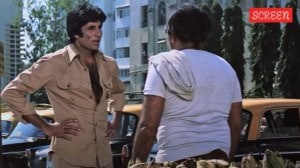With 1,600 km of gridlock per day, traffic congestion has nearly quadrupled in Bengaluru
The average speed of vehicles remained around 20 km in summer but declined to 18 km in July in Bengaluru, where the population is 1.6 crore and the vehicle count is over 1 crore.
 Traffic officials attributed the surge in congestion to multiple factors ranging from monsoon showers to vehicle breakdowns and increasing number of private vehicles that Bengaluru is adding to its road every day. (File)
Traffic officials attributed the surge in congestion to multiple factors ranging from monsoon showers to vehicle breakdowns and increasing number of private vehicles that Bengaluru is adding to its road every day. (File)Bengaluru and traffic congestion have become almost synonymous. Police data obtained by indianexpress.com reveals the average daily traffic congestion length in the city has surged to 1,638 km as of August—nearly four times higher than in January 2024. The causes? A perfect storm of rain, roadwork, potholes, vehicle breakdowns, an ever-increasing number of private vehicles, and inadequate public transport options.
The figures highlight a grim reality of the daily distress vehicle users are going through in the IT city and the need for urgent measures to address the menace. While the average daily congestion length was 465 km in January, it jumped to 1,168 km in July, and further escalated to 1,638 km by August 20. On a monthly scale, the overall congestion length ballooned from 14,423 km in January to an astonishing 36,194 km in July. Consequently, the average speed of vehicles has plummeted, dropping from 20.6 km/h in January to a sluggish 18.6 km/h in August.
Traffic officials attributed the surge in congestion to multiple factors ranging from monsoon showers to vehicle breakdowns and increasing number of private vehicles that Bengaluru is adding to its road every day.
M N Anucheth, Joint Commissioner of Police (Traffic), said, “The reason for lengthy traffic congestion is primarily due to the monsoon season, which results in waterlogging in many crucial junctions. Waterlogging would further mean bad roads riddled with potholes.”
Monsoon a key factor
The data also reveals that traffic congestion grows with the onset of the monsoon, while the congestion remains comparatively low during the summer months. The average congestion length per day stood at around 450 km between February and April, but surged to 600 km per day in May and further soared to 788 km in June and 1,168 km in July during the monsoon season. The average speed of vehicles remained around 20 km during the summer months and later declined to 18 km in July.
The police also attribute the length in traffic congestion to the breakdown of the Bangalore Metropolitan Transport Corporation’s buses with a total of 1,443 incidents reported as of August 20. The highest number of breakdowns were recorded in May (257), followed by June (263) and July (238).
A police officer said, “The bulk of traffic in Bengaluru is accounted for by the Whitefield and HAL traffic police divisions. The tech corridor along the Outer Ring Road between Silk Board and KR Puram, the Panathur S cross junction, Electronic City are some of the major pain points. The traffic is thrown out of gear during the monsoon, when waterlogging is most common in these areas leading to slow movement of traffic. Moreover, metro works are also underway along Outer Ring Road, giving vehicles only so much space to travel.”
Additionally, with the ban on vehicular movement on the KR Puram up-ramp of the Hebbal flyover, owing to ongoing road infrastructure work by the Bengaluru Development Authority, the traffic movement has slowed down at the Hebbal flyover significantly. The work has a cascading effect on other major roads such as Nagawara-Veeranapalya Road, Bellary Road and the Outer Ring Road towards Goraguntepalya.
 The police also attribute the length in traffic congestion to the breakdown of the Bangalore Metropolitan Transport Corporation’s buses with a total of 1,443 incidents reported as of August 20.
The police also attribute the length in traffic congestion to the breakdown of the Bangalore Metropolitan Transport Corporation’s buses with a total of 1,443 incidents reported as of August 20.
Urban mobility experts also blame the lack of integrated transport services—the incomplete 147 km network of the Bengaluru Suburban Railway Project (BSRP) and the slow progress of the metro’s phase 2 and phase 3 corridors—which is leading to the increasing use of private vehicles.
Over 1 crore vehicles
With approximately 23 lakh private cars, Bengaluru has surpassed New Delhi to become the Indian city with the highest number of private vehicles, according to the Delhi Statistical Handbook 2023. According to the transport department, the vehicle population has exceeded 1 crore. The city’s population is estimated at 1.6 crore.
Bangalore South MP Tejasvi Surya recently appealed to Deputy Chief Minister D K Shivakumar, who is also the Bengaluru development minister, to convene a meeting to address the growing traffic woes.
Sathya Arikutharam, an urban mobility expert, said, “The traffic congestion is a result of a disconnect between land use and transport planning in Bengaluru over the last 40 years. The city lacks an efficient integrated public transport network. I strongly believe that as a policy, the state government must impose work from home on the IT employees, not only for the employees’ welfare but also to meet the greenhouse emission standards. The IT employees ought to stay indoors, till the government expedites public transport systems such as BSRP and the metro.”













